
Consider any of the 31 (and counting) Marvel Cinematic Universe movies. The Avengers transform from civilians into superheroes. They leap from and into moving spaceships. They engage in epic battles against alien armies. Thanks to special effects, those fictional scenes look real.
Special effects can be practical or visual. Practical effects are actual objects or elements that filmmakers manipulate or that actors interact with in real time while filming. Many practical effects have been used since the beginning of motion pictures. They include props, models, puppets, makeup, prostheses (artificial features that temporarily change a face or body part), animatronics (lifelike robots), and pyrotechnics (fireworks or explosions).
Practical effects can enhance films in a variety of ways. Early horror films made use of prostheses to bring monsters to life. Puppets have been used to portray aliens and animals. Using stop-motion animation, a director can build a scene by making tiny adjustments to a puppet between shots. Once the film is sped up, the inanimate object looks like it is alive and moving.
This story is from the July/August 2023 edition of Cobblestone American History Magazine for Kids.
Start your 7-day Magzter GOLD free trial to access thousands of curated premium stories, and 9,000+ magazines and newspapers.
Already a subscriber ? Sign In
This story is from the July/August 2023 edition of Cobblestone American History Magazine for Kids.
Start your 7-day Magzter GOLD free trial to access thousands of curated premium stories, and 9,000+ magazines and newspapers.
Already a subscriber? Sign In
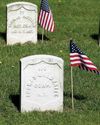
Putting the Pieces Together
Americans needed to begin to put the past behind them, come together, and plan for the future in the spring of 1865. But Abraham Lincoln, the man best equipped to lead them and who had hoped to restore the country as smoothly and peacefully as possible, had been assassinated.
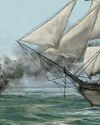
LAST SHOTS
The last Confederate forces in the Civil War didn’t surrender in the spring of 1865 or on a battlefield.
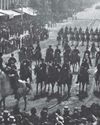
AND IN OTHER 1865 NEWS
A group of African Americans stop at the White House’s annual public reception on January 1, where they shake hands with President Abraham Lincoln.
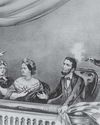
A Plot to Kill President the
For several months, actor John Wilkes Booth’s band of conspirators had plotted to capture President Abraham Lincoln and hold him hostage in exchange for Confederate prisoners.
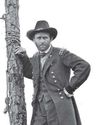
Let the Thing Be Pressed
In June 1864, Union Lieutenant General Ulysses S. Grant began a nearly 10-month campaign in Virginia.
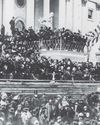
HEALING THE NATION
President Abraham Lincoln took the oath of office for the second time on March 4, 1865.

A Helping Hand
The spring season is hard in any agricultural society. Plants and animals are too small to eat.
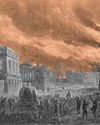
WAR SHERMAN-STYLE
As far as Union Major General William T. Sherman was concerned, the Civil War had gone on long enough.
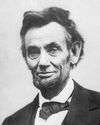
PEACE TALKS
The fall of Fort Fisher made clear that the Confederacy’s days were numbered. Southerners were tired and hungry.
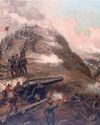
FORT FISHER'S FALL
Outnumbered Confederate soldiers inside Fort Fisher were unable to withstand the approach of Union troops by land and the constant Union naval bombardment from the sea.